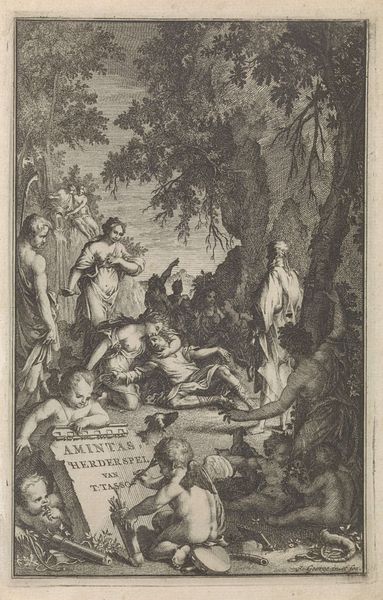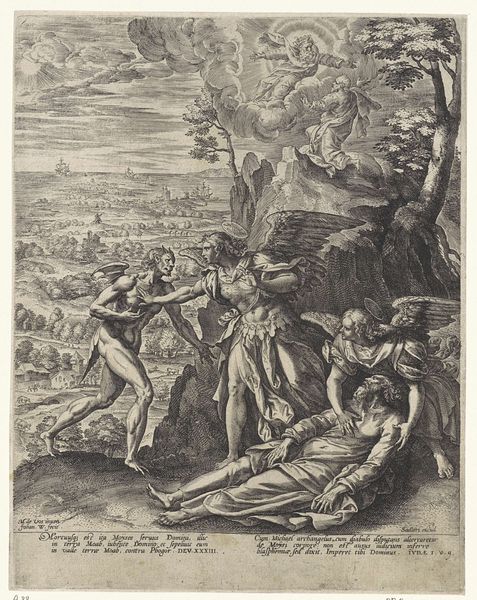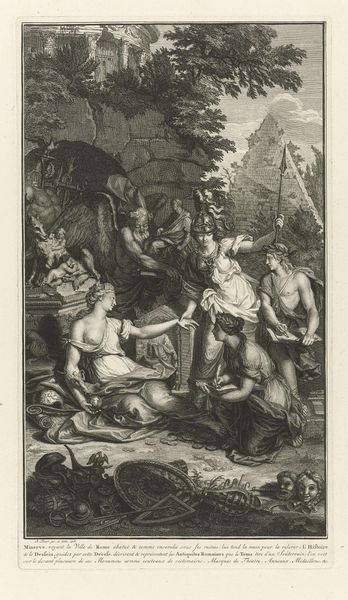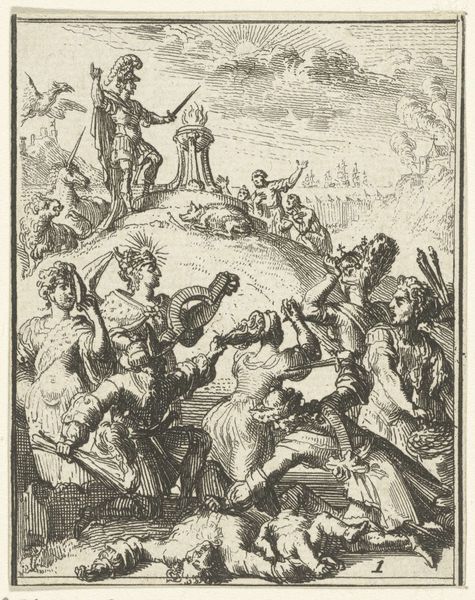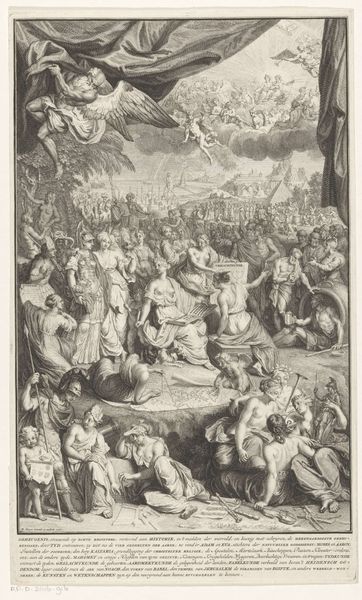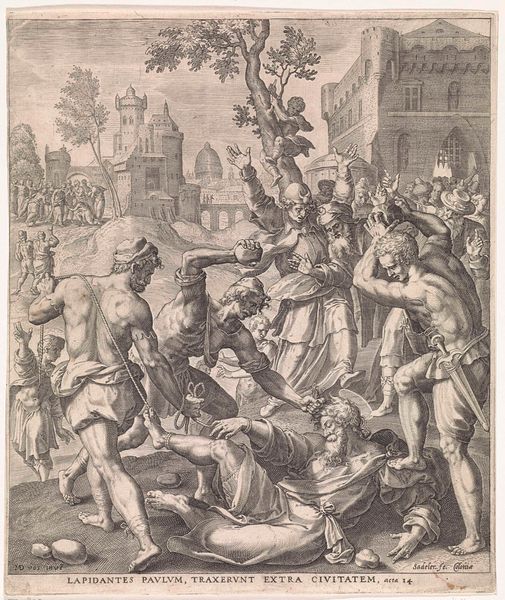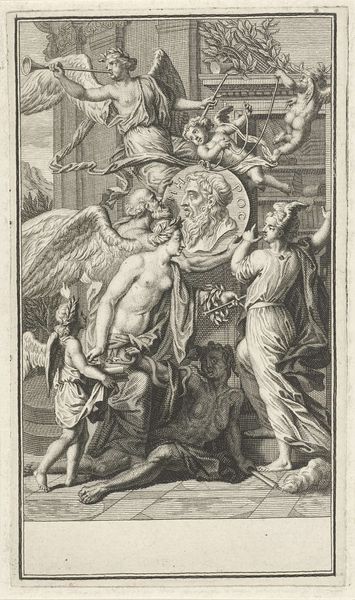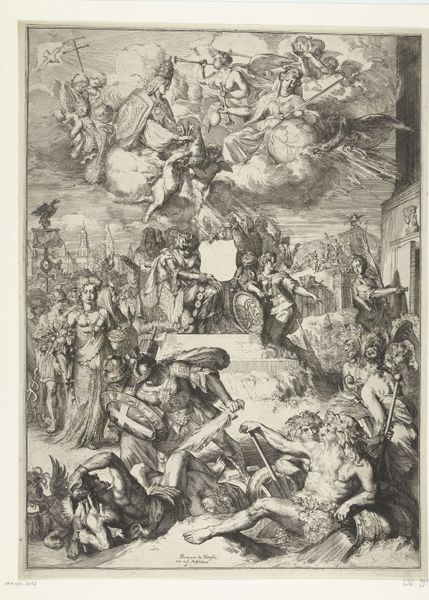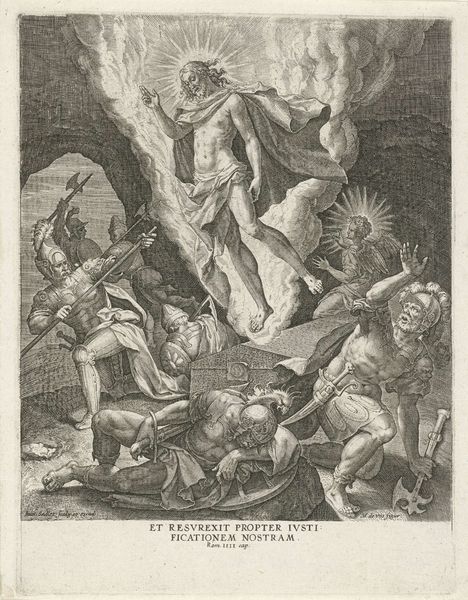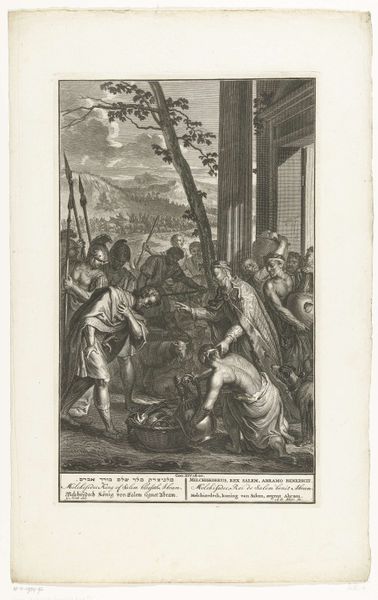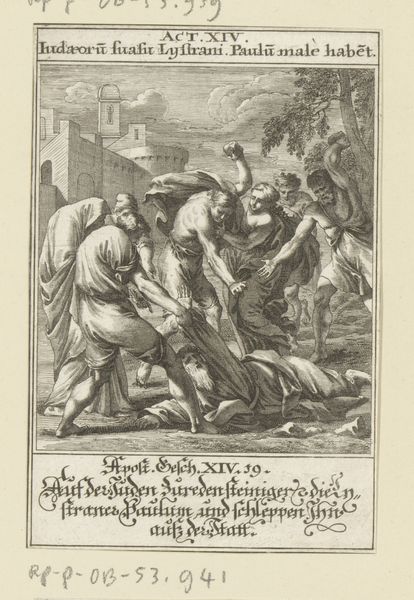
print, engraving
#
allegories
#
allegory
#
narrative-art
#
baroque
# print
#
old engraving style
#
figuration
#
line
#
history-painting
#
engraving
Dimensions: height 200 mm, width 158 mm
Copyright: Rijks Museum: Open Domain
Curator: What a wonderfully dramatic composition. This is the title page for M. Gargon's "The Only Comfort," an engraving made in 1710 by Jan van Vianen. Editor: The allegorical figures certainly make quite an impression. There’s a lot of dynamism in those lines, a real sense of baroque exuberance, despite the solemnity suggested by the title. Curator: It's an excellent example of the period's use of visual rhetoric. The central female figure, representing perhaps Divine Consolation or Truth, sits serenely amidst chaos, holding a bowl, maybe offering solace to those around her, but treading on a figure below. Editor: Precisely. Note the figure prostrate at her feet – presumably despair or worldly vanity, judging by the discarded crown and pearls – positioned so distinctly at the bottom. And that brilliant burst of light behind her suggests a very clear moral and spatial hierarchy. The tonal contrasts accentuate the scene's emotional drama as well. Curator: Indeed. The text it prefaces must've sought to provide spiritual succor, very typical in the period, in times marked by high mortality and religious strife. What I find intriguing is how prints like these circulated religious and social messages, playing a vital role in disseminating certain orthodoxies. Editor: Agreed, but beyond the historical context, it’s interesting how Vianen employs contrasting textures. The smooth skin of the allegorical figures against the roughly etched background generates a fascinating tactile tension that, to me, reflects the comfort being offered. It feels protective. Curator: I hadn’t considered that texture so viscerally before, though in this context I think it's intended to draw out an almost violent rejection of a previous material existence in favour of spiritual salvation. Editor: Perhaps we both see that tension. For me, the most striking thing about this work is its engagement in formal devices that generate profound pathos and drama in the viewing experience, almost independent of historical narrative. Curator: And I believe those stylistic choices, which do work effectively here, need always be contextualized through our broader understanding of that period. A lovely piece for discussion indeed.
Comments
No comments
Be the first to comment and join the conversation on the ultimate creative platform.
